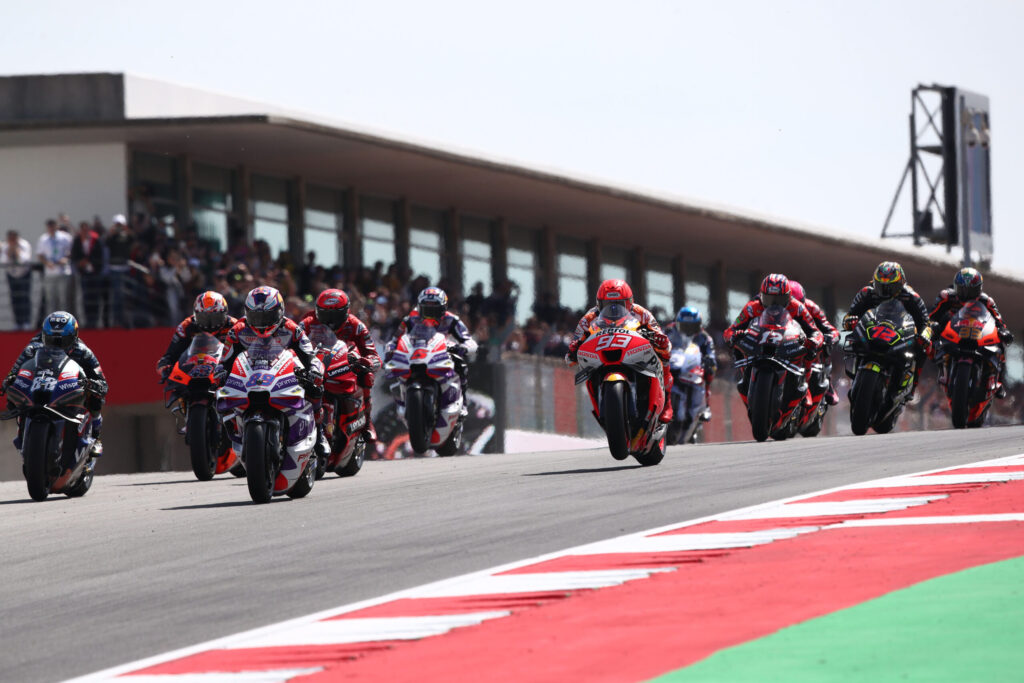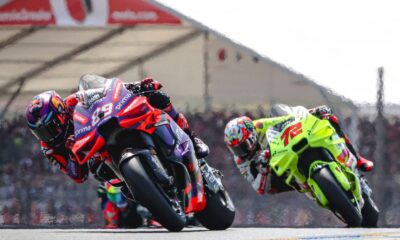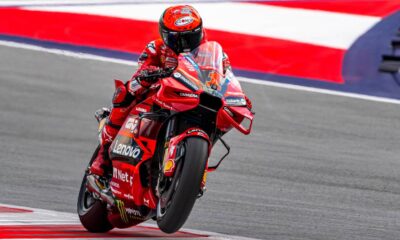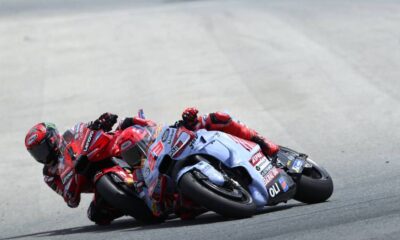Motorsport
MotoGP Preview: a thousand grand prix! How the MotoGP has changed in its 74 years of existence
The MotoGP series will celebrate its 1000th Grand Prix ever during this weekend’s race at Le Mans, France! Founded in 1949, the World Championship of road motorcycling has seen a series of stories, rivalries and breathtaking moments over 74 years that many fans, young and old, still remember.

The MotoGP series will celebrate its 1000th Grand Prix ever during this weekend’s race at Le Mans, France! Founded in 1949, the World Championship of road motorcycling has seen a series of stories, rivalries and breathtaking moments over 74 years that many fans, young and old, still remember. In the following lines, let’s take a look at a few key points in MotoGP history that have gradually shaped a sport that continues to be followed by hundreds of millions of people around the world nearly three quarters of a century later.
An explanation to start
At the outset, it is worth pointing out that although the 2023 French Grand Prix will go down in the sport’s history books as the 1000th grand prix in World Championship history, the most prestigious class of MotoGP will only celebrate its 952nd race at Le Mans.
The reason lies in the structure of the grand prix weekends during the first decades of the World Championship. Indeed, a significant number of grand prix, namely from the 1960s to the 1980s, did not always host the 500cc class, today’s predecessor of MotoGP.
The most recent example is the 2020 Qatar Grand Prix, which has been affected by the coronavirus pandemic that is just beginning. Only the Moto2 and Moto3 categories were contested at the Losail circuit there. However, despite the absence of a premier class, this grand prix was still included in the official 2020 season calendar.
From Pagani to Bagnaia
The World Road Motorcycle Championship was founded by the International Motorcycle Federation (FIM), which organised the first season of the championship in 1949. This was one year before the start of a certain other motorcycling discipline geared more towards four-wheeled racing.
The first ever confirmed world champions were Nello Pagani in the 125cc class and Freddie Frith in the “three hundred and fifty”. Both won their titles during the Dutch Tourist Trophy, the third event out of six in the first World Championship.
Assen was the second 125cc race for Pagani and the third 350cc race for Frith. Both riders had dominated all the races they had ridden up to that point and had scored enough points and races that no one could beat them.
73 seasons later, Izan Guevara (Moto3), Augusto Fernandez (Moto2) and Francesco Bagnaia (MotoGP) were the champions in the three World Championship categories. In contrast to Pagani and Frith in 1949, all of the aforementioned world champions did not win their titles until at least the eighteenth race of the year. In the case of Moto2 and MotoGP, only in the final, twentieth grand prix of the season!
From road circuits to state-of-the-art racetracks
A glance at the list of tracks that hosted grand prix races in the first World Championship gives one a chilling impression of the standards of motor racing at the time. Five of the six circuits of the 1949 season can be characterised as road circuits, on which standard everyday traffic normally took place. However, these super-fast and equally dangerous circuits are nowadays absolute classics. Take the Isle of Man race track or the former road circuit in Spa, Belgium.
However, with evolving safety criteria and after a number of fatal accidents, these race tracks have gradually disappeared from the World Championship calendars. The road circuits have been completely replaced by multi-purpose permanent race tracks.
At the same time, compared to the early years, today’s motorcycle races are held across the globe. The first ever grand prix outside the European continent took place in 1961 in Buenos Aires, Argentina. Although races are still primarily held in Europe, this year’s World Championship calendar is almost half made up of races on other continents.
As with Formula 1, the World Road Racing Championship has several traditional circuits in its portfolio. The most iconic track is undoubtedly Assen in the Netherlands, which with one exception has not been absent from any calendar since the 1949 season. In addition to Assen, other established circuits can be mentioned, such as Jerez in Spain, Phillip Island in Australia and Le Mans in France, which will be raced this weekend.
From the top five to the top 15 in points
Alongside the circuits, the scoring systems have also changed over time, but their main purpose remains the same after 74 years. To determine whoever scores the most points in a given season is the world champion.
In the first season, the first five drivers to finish scored points using the 10-8-7-6-5 system. Anyone could earn an extra point for capturing the fastest lap. Just a year later, the format for awarding championship “pips” changed to 8-6-4-3-2-1. This lasted until 1968. It was then replaced by three more systems in the space of less than 25 years. Finally, starting with the 1993 season, the now familiar system of 25 points for the winner and one point for the fifteenth finisher was introduced.
This season is marked by a revolution in this sphere of rules. In addition to the Sunday Grand Prix, Saturday sprint races have been introduced in which the top 9 riders will come in for championship points in a style of 12 points for the winner and one point for the ninth finisher.
From one memorable race to… another memorable race
Like any sporting discipline, motorsport and the World Road Motorcycle Championship not excluded remembers a large number of legendary moments that every die-hard fan knows every detail about. Whether it was the fierce battles on the track, the controversies or the unpredictable weather. All of these circumstances, separately or in combination, created great prizes that have gone down in history as the most memorable.
Motorcycle racing first and foremost wins over spectators with direct battles on the track without pit stops. In 1979, world champions American Kenny Roberts and local Barry Sheene competed at Silverstone in Britain. Their duel lasting almost the entire race resulted in one of the closest finishes, with Roberts beating Sheene at the line by just three hundredths of a second.
However, not all races in which female racers are constantly overtaking each other bring excitement with a positive ending. The 2015 Malaysian Grand Prix showed what heated rivalries between drivers fighting for wins and titles can do. The battle between Valentino Rossi, a direct title contender, and Marc Márquez escalated to such heated heights that it led to the most debated moment in the entire history of the World Championship to this day.
Grand prix can also be significantly affected by the changeable conditions, which add a welcome dynamic and unpredictability to the races. During the 2021 Austrian GP, it started raining less than four laps from the end. Drivers from the leading group, with the exception of Brad Binder, pitted en masse for a machine set up for a wet track. However, the South African managed the incredible feat of crossing the finish line on dry tyres, even though it was already “pouring rain” in the vernacular!
No rule changes await the riders in France this weekend. No new circuit will be introduced, nor will a world champion be decided. What is absolutely possible, however, is that fans and spectators will be treated to another breathtaking spectacle at Le Mans, which could be doubled with Saturday’s sprint!
Source: MotoGP






